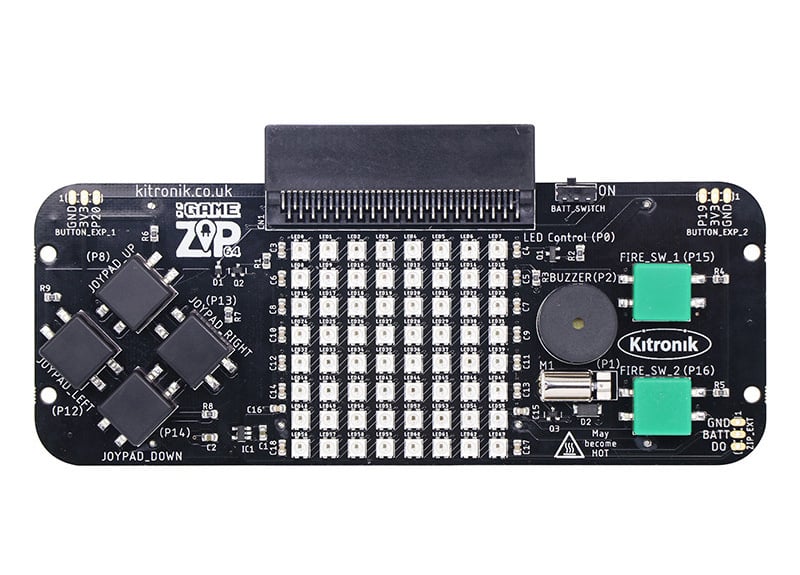Back to articles
Top Accessories for the Micro:Bit

While the Nordic-powered micro:bit is an elegant first step into the embedded world, there are several great products on the market that extend its capabilities even further.
Regular readers will know we are big fans of the micro:bit. There’s no better way to get kids interested in embedded programming than the credit card sized microcontroller.
Over the past years, schoolchildren in the UK, Denmark and Norway have benefited from national roll-out of free micro:bits to jump-start their computing education with connectivity and microcontrollers.
Read more: Inspiring 100,000 More Kids Into Technology
The micro:bit: not just for kids
There’s no doubt the micro:bit has been a big hit with students, teachers, and educational authorities across the world. Yet it’s just as popular with makers of all ages, thanks to the flexibility offered by the Nordic nRF51822 SoC and ARM Cortex-M0 microcontroller.
There’s a range of built-in sensors and plenty of I/O options, but the device can also be taken much further. While there isn’t the same range available as for the Raspberry Pi or Arduino, the micro:bit’s capabilities can be extended through the use of accessories and add-ons. Here’s a handful of our favourites.
Connectivity
The micro:bit uses Bluetooth low energy for short-range communication (10 to 100 meters), but Pi Supply’s IoT micro:bit LoRa node brings long-range wireless connectivity into play (10 km or more).
The RAK811 LoRa radio embedded with the full LoRaWAN Stack allows for fast prototyping. It features an on-board antenna and can be configured to use either the 868MHz or 915MHz frequencies.
I/O
The 5x5 LED matrix display does limit the micro:bit’s capabilities to specific types of projects. If you need an improved display, Waveshare 1.8-inch LCD screen could be the answer. It has a resolution of 160 X 120 with excellent colour capabilities, 23LC1024 onboard SRAM, SPI interface, and backlight adjustment via PWM.

To extend the sensor range, consider the Pimoroni’s Enviro:Bit. This sensor-packed board will help you to visualize data on air, weather, color, light, and sound. The tech includes a BME280 (temperature, pressure, humidity), a TCS3472 (light, colour), and a microphone for sound. The board takes advantage of Microsoft’s MakeCode editor to allow for block-style programming.
Automation
To take control and monitor projects up a notch, you need automation. The Pimoroni Automation:Bit is ideal for low-voltage home automation and robotics projects. The board comes fully assembled and is block coded using Microsoft’s MakeCode editor, so it’s pretty much plug-and-play out of the box. You can also take advantage of the Automation:Bit library hosted on GitHub. The only thing to bear in mind is its power tolerance is limited to 24V.
Another automation device, the MakerFocus Ring:Bit Extension Board allows your micro:bit to connect to servos and other GVS modules. The board features 3x I/O connectors, power and ground connectors, and there’s also space for 3x AA batteries.
Portable power
To use the micro:bit for a wearable project, portable power is required. The Kitronik MI:Power Board with coin cell slot for CR2032 3V batteries connects directly with the micro:bit via the 3V, GND, and P0 GPIO.
The built-in buzzer connects to P0, the default output pin when using the audio functions in the Block Editor software. To conserve power when not in use, there’s an on/off switch that’s easy to access and saves having to disconnect the board from the micro:bit.
A bit more fun
Staying with Kitronik, gaming fans will surely appreciate the Game Zip 64 accessory that is jam-packed with retro appeal. The handheld gaming platform with an 8X8 full-colour ZIP LED display is perfect for playing simple games such as Pong and Snake.
Four directional buttons, two fire buttons, a speaker and even haptic feedback all add to the experience. The 3xAA battery cages double as hand grips for an ideal combination of power and usability.
What is your favourite micro:bit accessory and how are you using it? Let us know.


